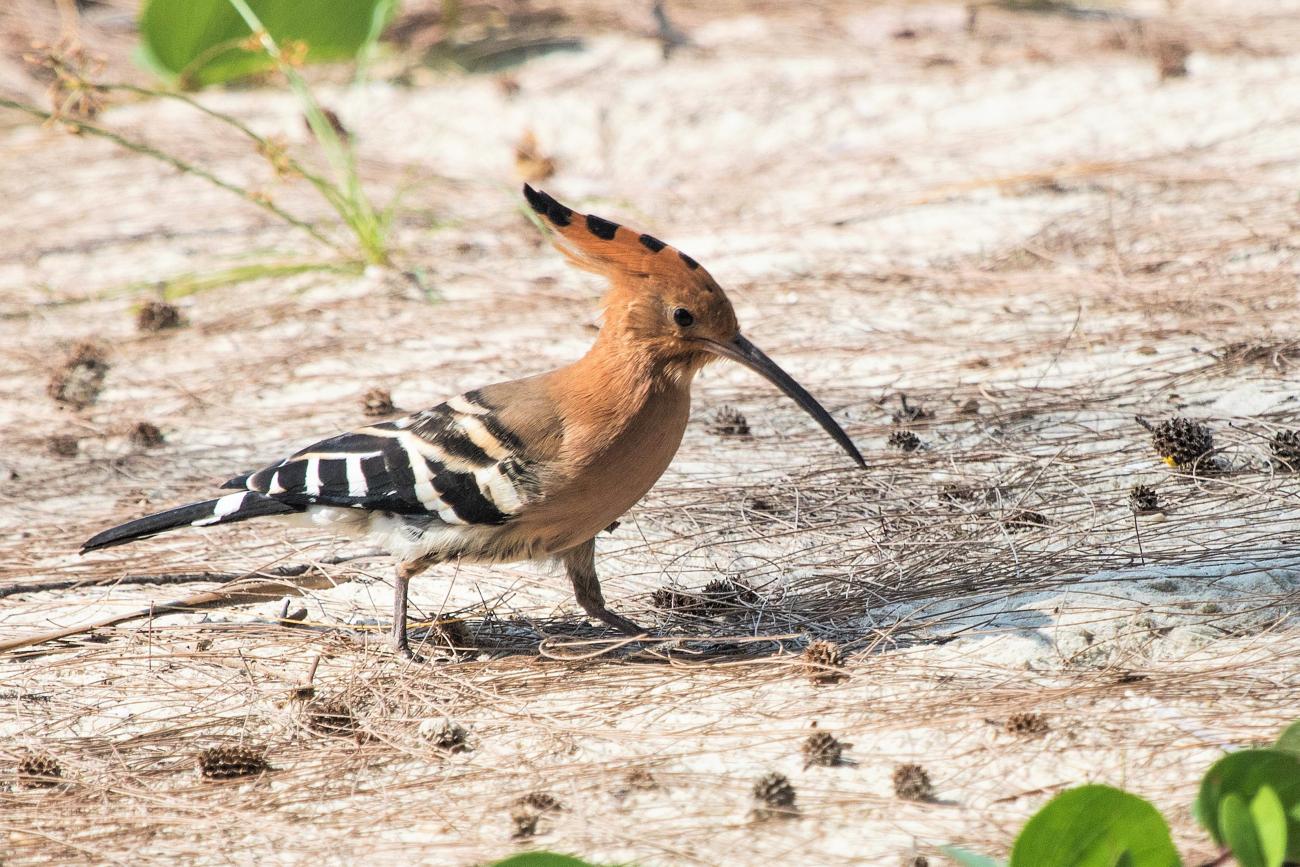Eurasian Hoopoe

Khao Lom Muak, Thailand
The iconic Eurasian hoopoe is widespread across Europe, Asia and Africa. African populations are sedentary but European and North Asian birds migrate South to the tropics in winter.
Habitat
The hoopoe requires a combination of lightly vegetated ground for foraging and trees, cliffs or walls for nesting. They are at home in a wide variety of habits including wooded steppes, savannas, grassland, heathland and forest glades. They are also found on agricultural land such as orchards and fields and in parkland and large gardens.
Feeding
Hoopoes are omnivores. They prefer insects but will consume small reptiles, frogs, seeds and berries. They are mainly ground feeders using their long, curved beaks to penetrate deep into the soil for larvae, worms and pupae, or probing amongst leaf debris for crickets, locusts cicadas, ants and beetles. They will also feed on the wing taking insects as hoopoes' strong round wings make them fast and manoeverable. Large prey are beaten against a rock or the ground to kill them and remove inedible body parts such as carapaces and wings.
Breeding
Hoopoes are monogamous for a season. They are territorial and fights between rivals can result in serious injury. They build their nests in holes in trees or walls and often these are lined with leaves or barks or other vegetation. The female lays between four and twelve eggs single season which she incubates alone. Both parents feed the chicks
Wildfile Specials
- Hoopoes are named after their call.
- Hoopoes belong to the same family as the hornbills,
- Hoopoes have been recorded at a height of 21000 feet.
- The female hoopoe and her chicks have a uropygial gland which can produce a foul-smelling liquid that resembles rotting meat. This is rubbed into the feathers to deter predators and parasites and may act as anti-bacterial agent. Nestling will also aim streams of faeces at intruders and make a snake-like hissing noise.
- Hoopoes were considered sacred in ancient Egypt.
- In the Jewish faith hoopoes are regarded as inedible
- In medieval Europe times hoopoes were considered an evil bird.
- In Lithuania hoopoes were connected with death and the underworld. Their song was believed to foreshadow the deaths of people or cattle.
- In Scandinavian, hoopoes were thought to be harbingers of war.
- In the Munich Manual of Demonic Magic the magiical spells described often require the sacrifice of a hoopoe to summon demons and effect other magic.
- In Persian hoopoes were regarded as a symbol of virtue. A hoopoe was a leader of the birds in the Persian book of poems, "The Conference of Birds".
- The hoopoe is the national bird of Israel.
- In Morocco, hoopoes are part of the live trade in medicinal products in herbalist shops. This trade is unregulated and a threat to local populations.
- Harrison Tordoff, a World War 11 fighter ace and noted ornithologist, named his P51 Mustang fighter plane Upupa epops which is the Latin name for the hoopoe.